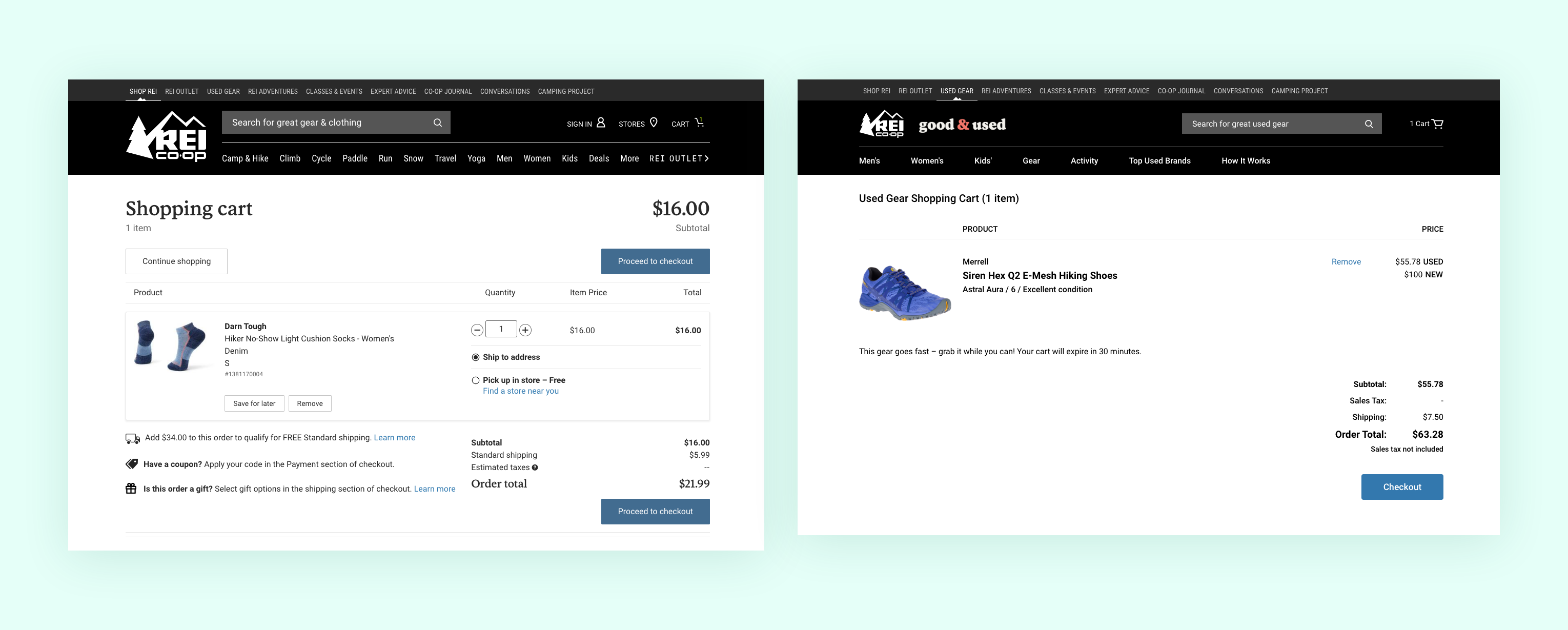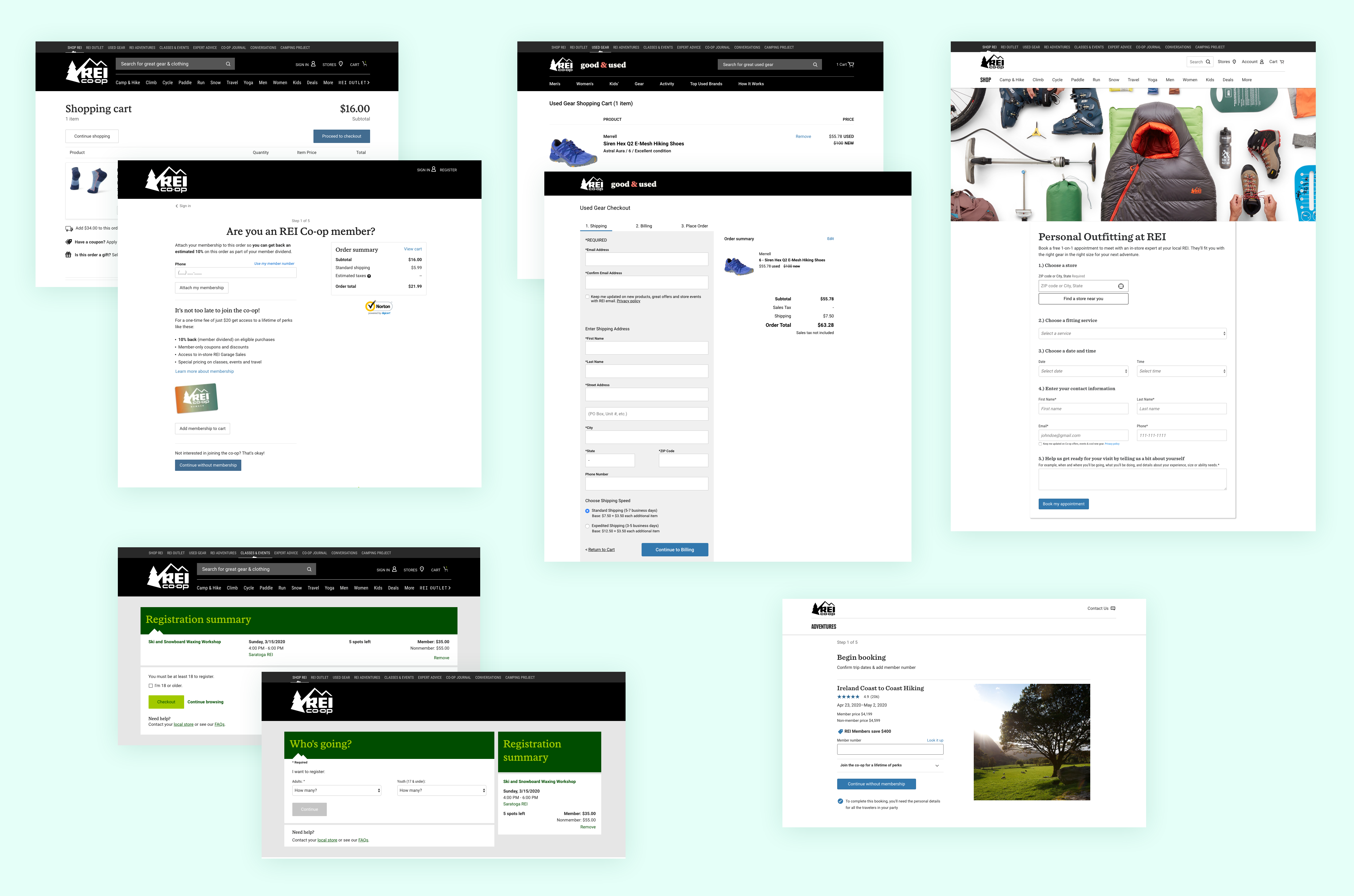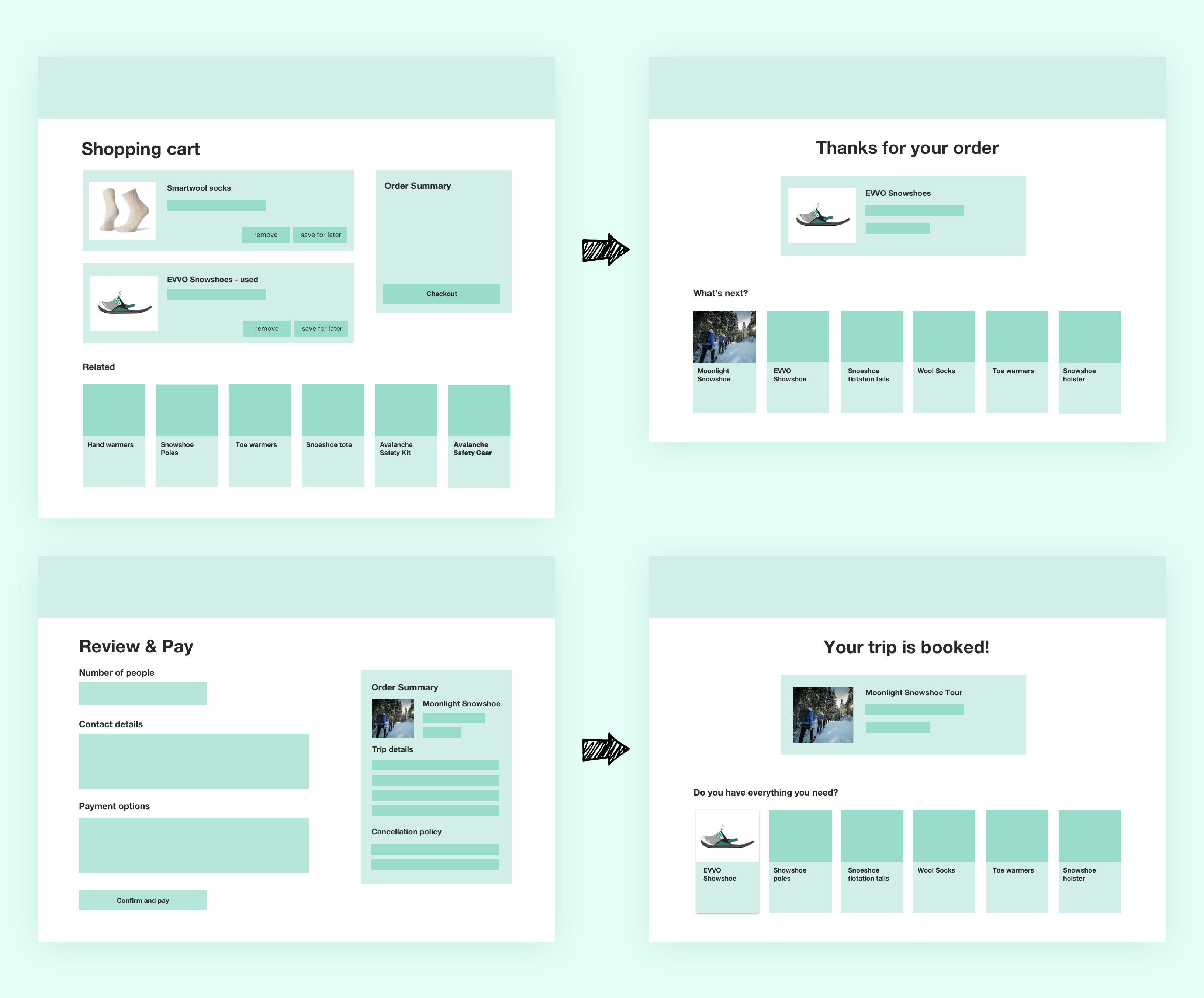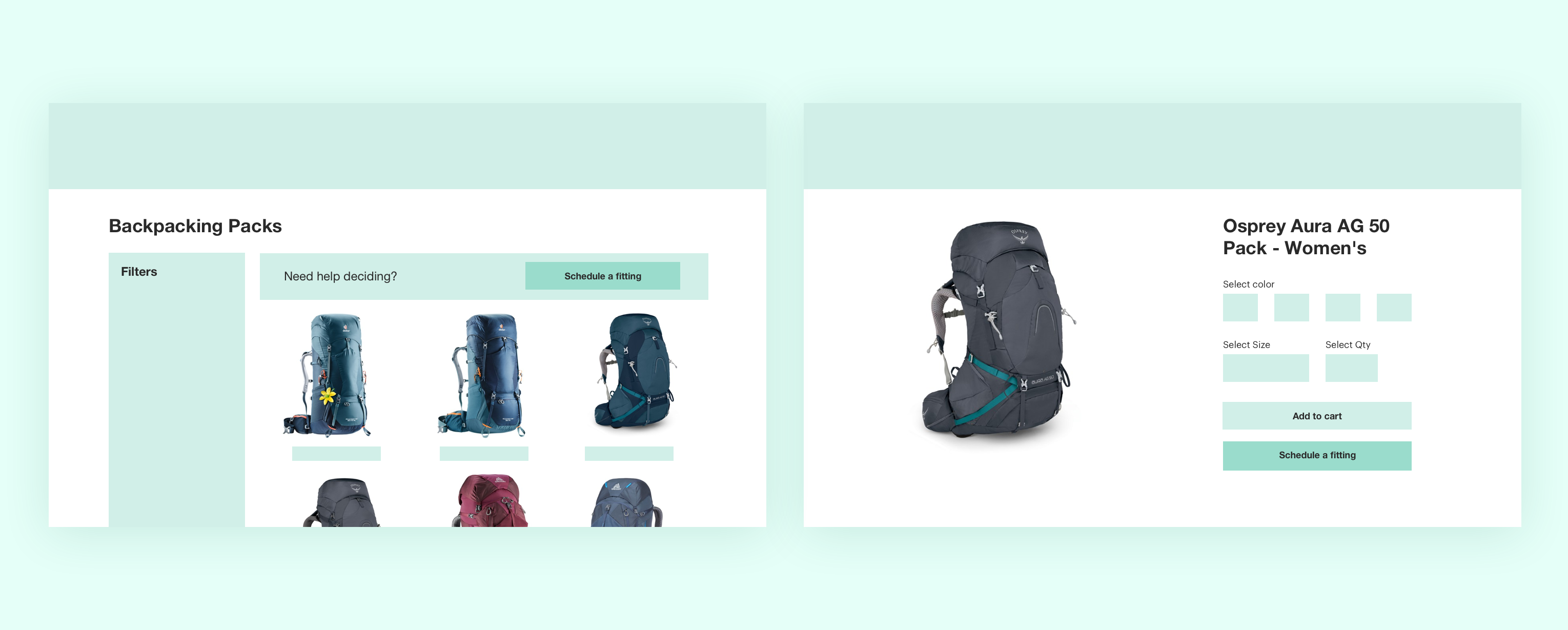“Our purpose is to awaken a lifelong love of the outdoors, for all.” – REI
REI offers a variety of ways to help inspire, educate, and prepare people to experience life outdoors; you can book a trip to hike the Australian outback, sign up for a wilderness safety class, buy some new or used hiking shoes, or schedule an outfitting appointment for your next adventure. however, there are existing customer pain points due to disparate checkout platforms. A unified commerce platform could solve some of those problems.
Build a single, scalable cart and checkout platform to support the continuity of the shopping experience across devices, channels, and subsites.
My role: Concept design and strategy for the future state of checkout.
Project team: UX Researcher, Product Manager, and Technical lead
Tools: Sketch & Abstract
Imagine you find those hiking shoes you’d been eyeballing, slightly used, at a fraction of the cost. You pop them in your cart and then decide to treat yourself with some shiny new socks. You pop those in your cart and go to checkout but, your shoes are missing!

Those hiking shoes were added to a cart, just not the same cart as your new socks. Confusing? Frustrating? Check and check.
There are separate carts and checkout experiences across the REI website for
♦ Buying new or outlet gear & apparel
♦ Buying used gear & apparel
♦ Renting gear
♦ Booking a class or event
♦ Booking a day or multi-day trip
♦ Scheduling outfitting, gear service, or installation appointments
 To the customers it’s all REI, so why wasn’t the checkout experience reflecting that?
To the customers it’s all REI, so why wasn’t the checkout experience reflecting that?
We knew that it made sense to combine similar offerings into one cart and checkout experience (buying used shoes and new socks) but what about booking a trip and buying or renting gear? Or buying some snowboard boots and scheduling an appointment to get them fitted?
There was plenty of research out there on the traditional e-commerce checkout. However, we couldn’t find much on booking or scheduling online and there were hardly any examples of a single checkout platform for booking, buying, and scheduling.
We found ourselves in uncharted waters. We needed to learn more about how customers thought about the different ways they could transact online and how they might compare or contrast with one another before we could conceptualize the design.
Generative Research
♦ Blind study (REI not revealed as the sponsor)
♦ 9 participants, mixed demographics
♦ 1-hour, in-person sessions
♦ Cognitive mapping and cart sort
For the first part of the session, we provided participants with drawing materials and asked them to write, draw, or discuss what came to mind when they thought about transacting online–booking, buying, scheduling, renting or reserving. For the second part we gave them cards with various steps and stages in the transactional process–add to cart, checkout, contact information, etc. and asked them to sort according to what made the most sense to them.
Key Learnings
Generally, people wanted to do one thing at a time.
♦ No distractions from the intended purchase path.
♦ Distractions can create especially negative impressions when customers feel like they are being up-sold
There were two distinct groups of offerings based on differences in customers’ transactional timelines, behaviors, and goals.
♦ Booking (activity, class, or trip) and buying (gear or clothing)
♦ Scheduling (gear service, installation, and outfitting appointments)
Now that we had a better idea of how people thought about booking, buying, and scheduling, I was ready to start on the design concepts. I put together a design ideation workshop with UX designers from different product teams, UX research, and product management so we could brainstorm some solutions together.
After the workshop, I started to refine and document some concepts we could move forward with and continue to explore how we might integrate our customer-facing checkout experiences in ways that are intuitive and useful to our customers.
We knew that booking (trip, class, or event) and buying or renting gear had similar overarching journeys–research, solidify decision, then checkout–but we also knew that people didn’t want to be distracted from their intended purchase. So, what might a more integrated cart and checkout experience for booking and buying look like? And how can we do it in a way that’s helpful, not distracting?
All-in-one checkout
Combine the carts and checkout for multiple offerings– add gear, trips, or classes to one cart and checkout.
An advantage of this design is that you can shop across all of REI’s offerings and checkout in one experience. One of the concerns with this concept is, if you had items leftover in your cart from a previous visit to the site and you went to book a trip or class, would it be an annoyance to have to filter out unrelated items? Another concern with multiple types of offerings in the checkout is that it would increase the number of steps, therefore, increasing the chance of abandonment.
Separate checkouts
Combine booking classes, trips, and events into one checkout experience and buying gear and apparel (new, used, and outlet) in another.

Top: buying gear and clothing, Bottom: Booking a trip. In both experiences, other offerings can be featured on the order confirmation screen.
An advantage of this design is that we focus the customer on one path and limit the possible distractions in checkout.
In this design, after a customer completes checkout–either booked a trip or bought some gear– we can anticipate what other offerings might be helpful to the customer and show them on the order confirmation page. For example, you’ve just booked a guided tour to snowshoe under the glow of moonlight. What’s next? Do you have all the gear you need?
Per our insights from the research study, scheduling an appointment wasn’t viewed as a purchase and people didn’t think ‘adding to a cart’ was relevant. So, how might scheduling an appointment or service fit into the e-commerce customer journey if customers perceive it differently from booking and buying?
We could add scheduling options to product and search results pages to help aid the decision-making process.

Not sure which backpack will fit you comfortably and hold everything you need to pack? Schedule a backpack outfitting appointment.
Another way we could fit scheduling into the customer journey is in the cart or on the order confirmation screen when they are making or have made a relevant purchase.
In addition to surfacing scheduling options when a customer is considering a purchase or checking out, there are lots of opportunities for improving scheduling experience as a whole.
♦ Landing & detail pages for scheduling outfitting appointments & services
♦ Integrating customer accounts with scheduling–remind people when its time to get their gear serviced and keep a history of their appointments
♦ Scheduling forms–what specific information can we collect or provide the customer to help streamline the appointment once a customer is in the store
♦ Option to add a payment method to be charged after the service is complete – i.e. uber, Styleseat, Mindbody.
Although there is still plenty of testing, design, and discovery work to be done, this work will play an important part in informing the direction REI takes towards building a flexible, scalable, unified commerce platform; the future benefits of which–will reduce technical overhead, power the growth agenda, and most importantly, enable a more seamless shopping experience for the customer.